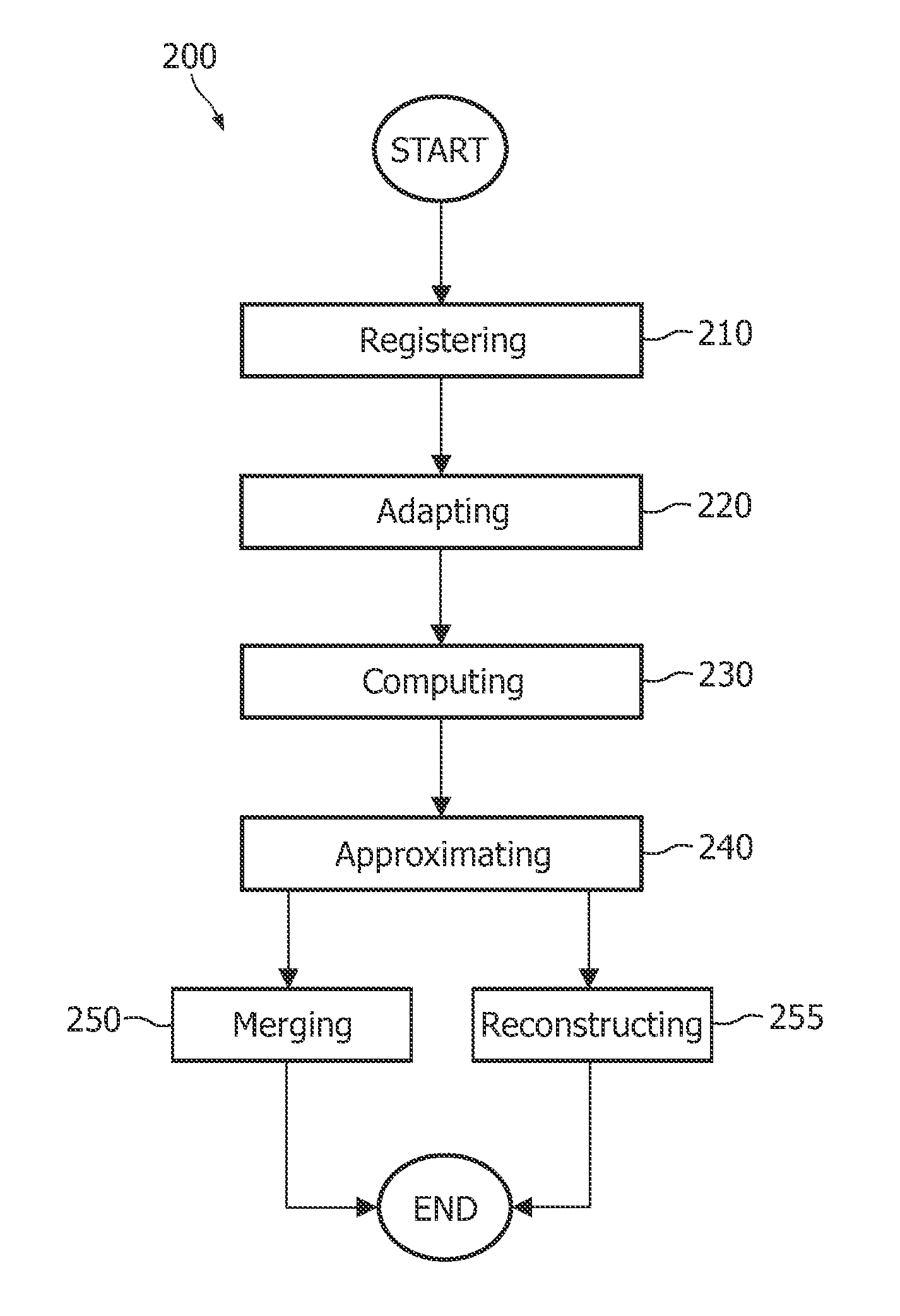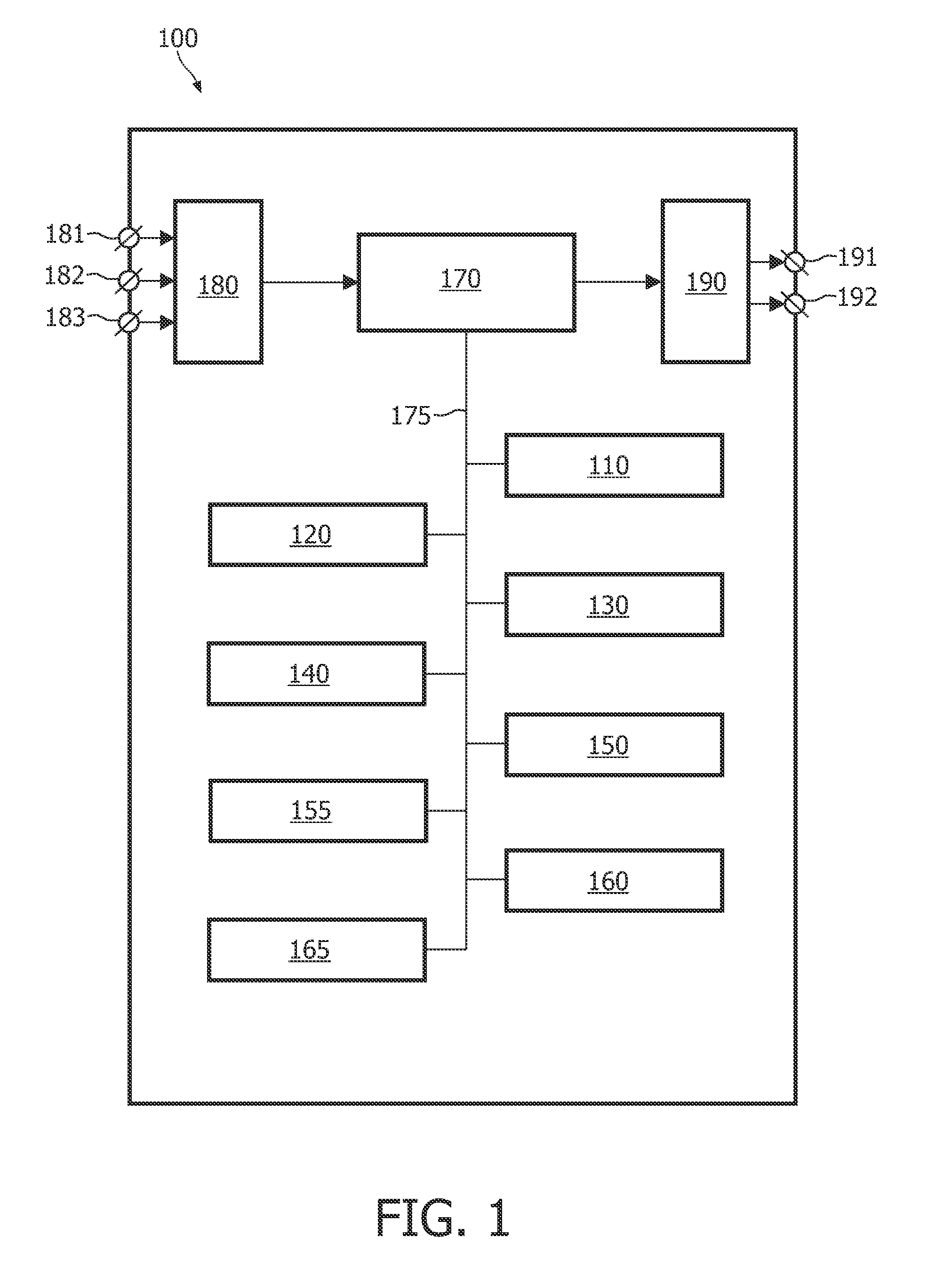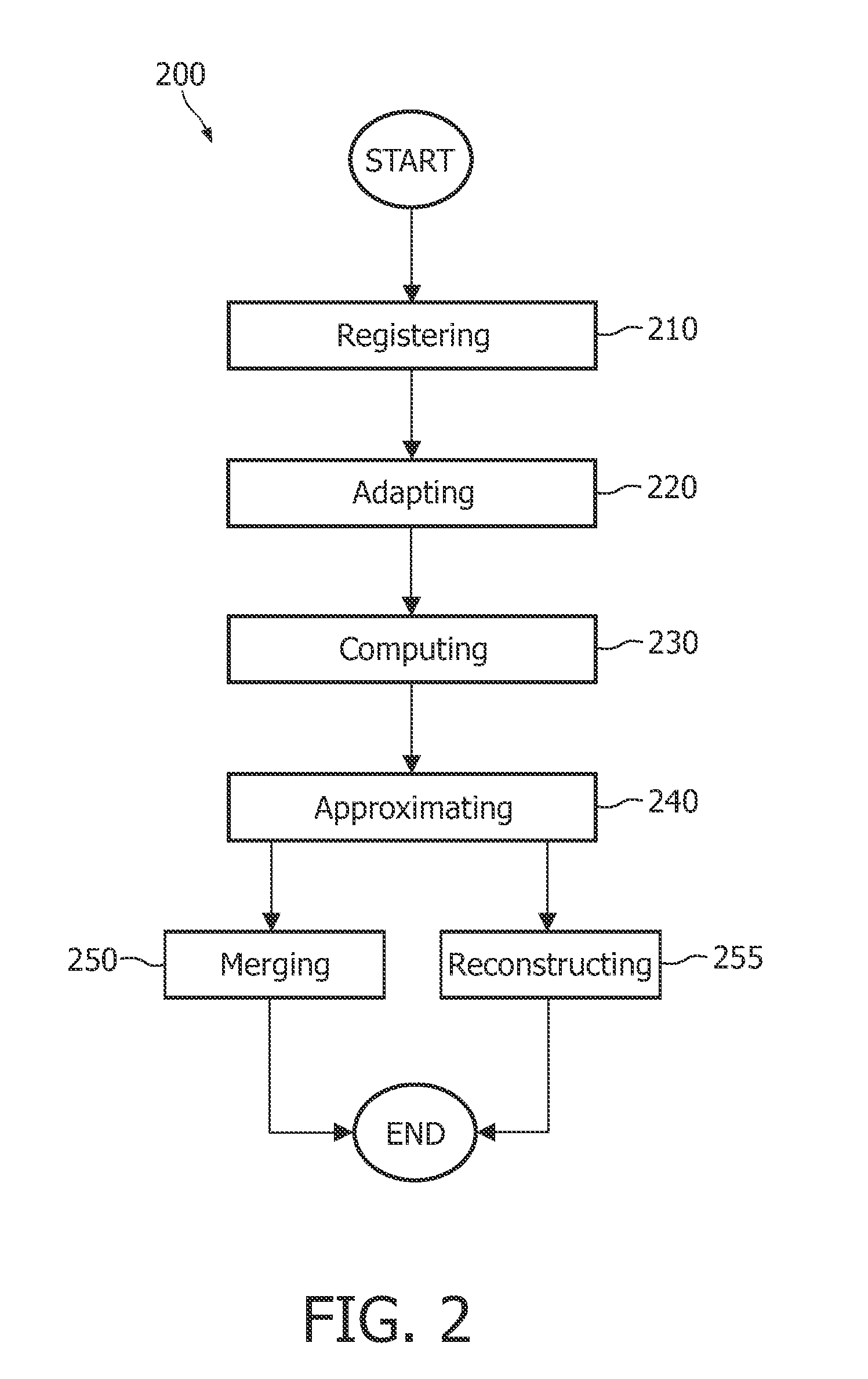Reduction of heart motion artifacts in thoracic CT imaging
a motion artifact and thoracic ct technology, applied in the field of medical imaging, can solve the problems of inconsistencies within the projection set, motion artifacts such as tissue dislocation, blurring, spurious edges, and requiring an extended data acquisition time, and achieve the effect of reducing motion artifacts in tomographic images
- Summary
- Abstract
- Description
- Claims
- Application Information
AI Technical Summary
Benefits of technology
Problems solved by technology
Method used
Image
Examples
Embodiment Construction
[0039]FIG. 1 is a block diagram of an exemplary embodiment of the system for adapting a first model mesh to first image data and for adapting a second model mesh to second image data, the system comprising:
[0040]a registration unit 110 for registering the first model mesh with the first image data and for registering the second model mesh with the second image data on the basis of a computation of a registration transformation for transforming the first model mesh and for transforming the second model mesh; and
[0041]an adaptation unit 120 for adapting the registered first model mesh to the first image data on the basis of a computation of locations of vertices of the first model mesh and for adapting the registered second model mesh to the second image data on the basis of a computation of locations of vertices of the second model mesh.
[0042]The exemplary embodiment of the system 100 further comprises the following optional units:
[0043]a computation unit 130 for computing a sparse v...
PUM
 Login to View More
Login to View More Abstract
Description
Claims
Application Information
 Login to View More
Login to View More - R&D
- Intellectual Property
- Life Sciences
- Materials
- Tech Scout
- Unparalleled Data Quality
- Higher Quality Content
- 60% Fewer Hallucinations
Browse by: Latest US Patents, China's latest patents, Technical Efficacy Thesaurus, Application Domain, Technology Topic, Popular Technical Reports.
© 2025 PatSnap. All rights reserved.Legal|Privacy policy|Modern Slavery Act Transparency Statement|Sitemap|About US| Contact US: help@patsnap.com



